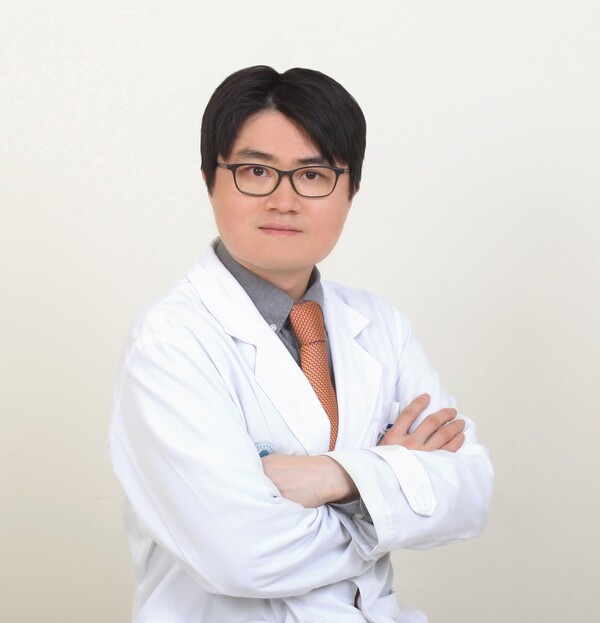During the hot summer months, the number of patients who visit hospitals for varicose veins increases.
According to the National Health Insurance Review and Evaluation Service's statistics on diseases of national interest, the highest number of patients visit hospitals for varicose veins in July and August, the hottest months of the year.
“People who usually ignore varicose veins due to mild or no pain usually visit hospitals in the summer because their symptoms become severe,” said Professor Cho Won-chul of the Cardiovascular and Thoracic Surgery Department at GangNeung Asan Medical Center.
Why do varicose veins symptoms get more severe in the summer, then?

Veins are the blood vessels that carry blood back to the heart from the arteries and are subject to inertia due to low pressure and slow blood flow. There are three main types of veins -- superficial veins (located just under the skin), deep veins (located under the muscles), and penetrating veins that connect the two.
Varicose veins are caused by increased pressure in the superficial veins of the legs, causing dilated blood vessels to bulge out of the skin or reflux blood, resulting in pain or heaviness in the legs. It is commonly associated with family history, pregnancy, obesity, lack of exercise, prolonged standing or sitting, and smoking.
Hot summer weather causes the body's blood vessels to dilate, which reduces venous function and prevents smooth blood circulation.
“When the blood vessels dilate, more blood stays in the legs, causing pain by compressing the surrounding muscles, skin, and nerve tissue,” Professor Cho said. “If this condition continues for a long time, the pressure in the veins increases and the valves that prevent blood from flowing backward are damaged, resulting in varicose veins.

Varicose veins are characterized by leg pain (cramping, dull, or aching), fatigue, burning, restlessness, itching, skin darkening, pigmentation, and skin ulcers. In severe cases, it can cause deep vein thrombosis and pulmonary embolism.
There are no precursor symptoms, but if you have frequent swelling and numbness in your legs, burning on the soles of your feet, or persistent fatigue in your legs, you should suspect varicose veins.
“However, if the main symptom is pain, it may be caused by a disorder of the musculoskeletal, nervous, or arterial system, so it is necessary to diagnose and treat it accurately,” Cho noted.
Doppler ultrasound, CT, and angiography, which measure the speed and volume of blood flow, are used to diagnose varicose veins and determine the extent of venous insufficiency. Physicians can visually diagnose varicose veins if they are bumpy, protrude through the skin, and are easily visible to the naked eye.
Treatment is divided into surgical and non-surgical options, with surgical treatments comprising high ligation, stripping, and varicose vein ablation. This involves making a few small skin incisions in the groin and below the knees and then surgically removing the diseased vein tissue, which leaves a scar but is the most definitive treatment.
There's also the “endovenous heat therapy, which involves placing a laser fiber or radiofrequency fiber into the stretched vein and then emitting laser or radiofrequency heat to block blood flow to the diseased vein. Other options include ultrasound-guided intravenous glue injection therapy (VenaSeal).
Non-surgical treatments include drug sclerotherapy (sclerotherapy). It is used in cases where surgical treatment is not feasible (recurrent varicose veins, venous malformations, penetrating veins, and venous ulcers.
Since varicose veins are a vascular disease, people should refrain from smoking, excessive alcohol consumption, and spicy and salty foods, all of which adversely affect the blood vessels. Obesity and constipation should also be treated immediately. Abdominal obesity and constipation cause an increase in abdominal pressure and stress the blood vessels.
It’s also important to avoid taking too many hormonal medications. Female hormones are responsible for regulating menstrual functions and relaxing the muscles. This relaxes the blood vessels, which can lead to varicose veins.
In these hot summer months, you had best to avoid exposing your legs to hot things (sun, sauna, etc.) for long periods.
Varicose veins can affect anyone whose job involves standing or sitting for a long time, so exercise regularly through running, cycling, and other means. If you can't exercise, it’s helpful to wear compression stockings.
In addition, maintaining a comfortable posture when sleeping or resting, and elevating the legs on a cushion 20-30 centimeters above the bed are also effective in relieving and preventing symptoms.
“If you have severe varicose veins, you can treat them with medication and exercise rather than surgery,” Professor Cho said. “If you don't need surgery right away, you should try conservative treatments, such as lifestyle changes and wearing compression stockings.”

